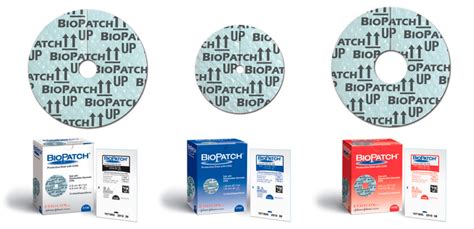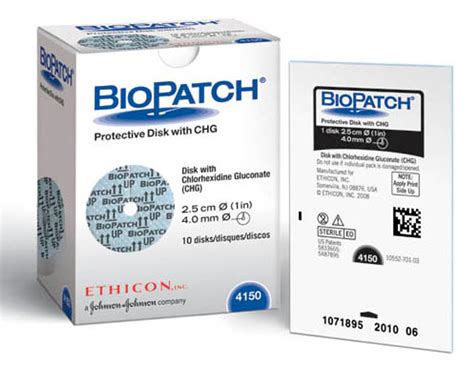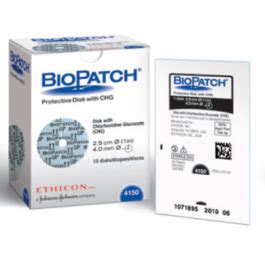The concept of a biopatch, a small, adherent device used to monitor and treat various medical conditions, has gained significant attention in recent years due to its potential to revolutionize the field of healthcare. These devices, often resembling small patches or stickers, are designed to be worn on the skin, where they can track vital signs, detect biomarkers, or deliver medications in a controlled manner. The development of biopatches is a multidisciplinary effort, combining advances in materials science, electronics, and biomedical engineering to create innovative solutions for patient care.
Principles and Functionality of Biopatches

Biopatches operate on the principle of integrating electronic components with biocompatible materials, allowing them to interface directly with the human body. They can be equipped with sensors to monitor parameters such as heart rate, blood pressure, glucose levels, and even specific biomarkers associated with diseases. Some biopatches are designed with actuators that can deliver drugs transdermally, offering a pain-free alternative to traditional injections. The data collected by these devices can be transmitted wirelessly to healthcare providers, enabling remote monitoring and timely interventions.
Materials and Manufacturing Techniques
The fabrication of biopatches requires the use of flexible, biocompatible materials that can conform to the skin without causing irritation or allergic reactions. Researchers have explored the use of polymers, nanomaterials, and even bio-based materials to develop substrates that are not only safe but also enhance the performance of the biopatch. Advances in printing technologies, such as screen printing and inkjet printing, have also played a crucial role in the mass production of biopatches, allowing for the rapid fabrication of complex electronic circuits on flexible substrates.
| Material Type | Biocompatibility | Flexibility |
|---|---|---|
| Polydimethylsiloxane (PDMS) | High | Excellent |
| Polyethylene Terephthalate (PET) | Good | Fair |
| Nanocellulose | Excellent | Good |

Applications and Future Directions

Biopatches have a wide range of potential applications, from monitoring chronic conditions like diabetes and heart disease to detecting early signs of infectious diseases. They could also play a significant role in personalized medicine, allowing for tailored treatment plans based on an individual’s specific physiological responses. As technology continues to advance, we can expect to see biopatches integrated with artificial intelligence (AI) and machine learning (ML) algorithms, enabling predictive analytics and automated decision-making in healthcare.
Challenges and Limitations
Despite the promising potential of biopatches, several challenges must be addressed before they can be widely adopted. These include ensuring long-term stability and reliability of the devices, overcoming regulatory hurdles, and addressing privacy concerns related to the transmission and storage of personal health data. Additionally, there is a need for standardization in the design and testing of biopatches to guarantee their safety and efficacy across different populations and conditions.
Key Points
- Biopatches are wearable, adherent devices that can monitor vital signs, detect biomarkers, and deliver medications.
- The development of biopatches combines materials science, electronics, and biomedical engineering.
- Biopatches have the potential to revolutionize healthcare by enabling remote monitoring and personalized treatment plans.
- Material selection is critical for biopatch development, requiring a balance between biocompatibility, flexibility, and electronic conductivity.
- Future directions include integration with AI and ML for predictive analytics and automated decision-making in healthcare.
As research and development in the field of biopatches continue to advance, it is essential to consider the ethical, social, and economic implications of these technologies. By doing so, we can harness the full potential of biopatches to improve patient outcomes, enhance the quality of life, and transform the healthcare landscape.
What are the primary applications of biopatches in healthcare?
+Biopatches have a wide range of applications, including monitoring chronic conditions, detecting biomarkers for diseases, and delivering medications transdermally.
How do biopatches ensure user safety and comfort?
+Biopatches are designed with biocompatible materials and flexible substrates to minimize skin irritation and ensure comfort during wear. They are also subject to rigorous testing to guarantee their safety and efficacy.
What role can biopatches play in personalized medicine?
+Biopatches can enable personalized medicine by providing real-time data on an individual's physiological responses, allowing for tailored treatment plans and more effective disease management.
Meta Description: Discover how biopatches are revolutionizing healthcare with their ability to monitor vital signs, detect biomarkers, and deliver medications, and explore their potential in personalized medicine and beyond.
